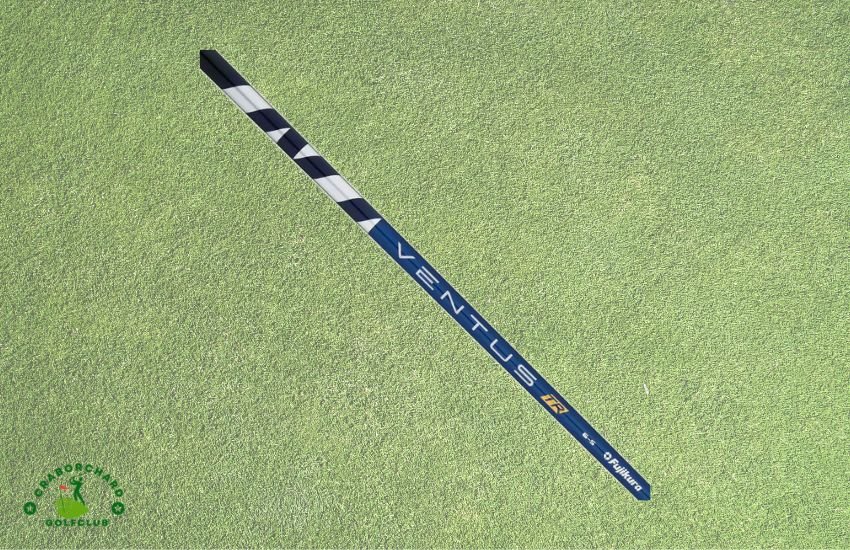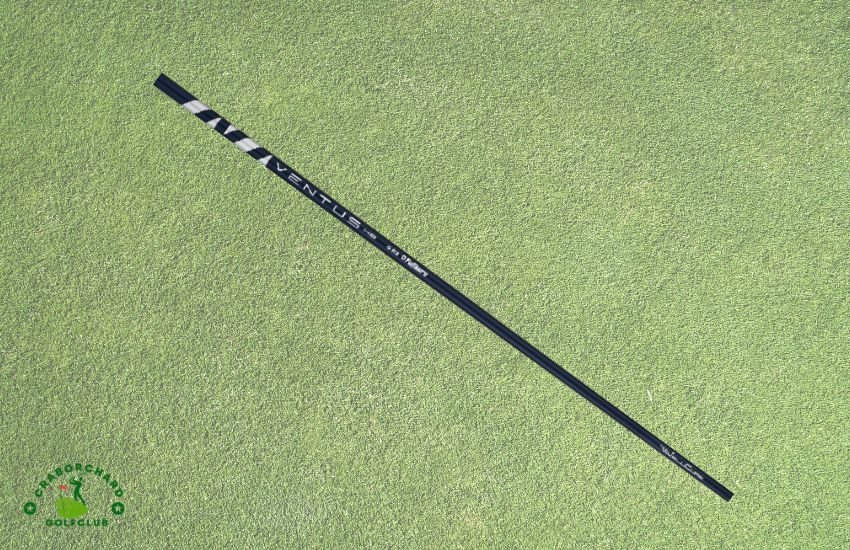Fujikura Ventus Blue 5 Vs 6 – [Test Results After 10 Rounds]
With its heavier weight and stiffer flex options, the Fujikura Ventus Blue 6 appeals to players with high swing speeds. On the other hand, the Fujikura Ventus Blue 5 is easier to hit if you have a lower swing speed. After ground testing, here’s what I found:
Overall, Fujikura Ventus Blue 5 Vs 6 shafts are great on the course, but they cater to the needs of very different golfers.
Fujikura Ventus Blue 5 Specifications

- Flex Options: R2, R, S
- Length: 46 inches
- Weight: 58g, 58.5g, and 59g
- Tip Flex: 94-112
- Torque: 3.3-4.0
- Spin: Low/Medium
- Launch: Medium/High
Ventus Blue 6 Specifications


- Flex Options: R, S, X, TX
- Length: 46 inches
- Weight: 65g and 68.5g
- Tip Flex: 88-93
- Torque: 3.1-3.5
- Spin: Low
- Launch: Medium
Testing the Fujikura Ventus Blue 5 and 6 Shafts
To check how they perform in real-world scenarios, I’ve tested the Ventus 5 and 6 side-by-side to check how they perform in real-world scenarios. I used the same grip and club head and recorded the results of 10 rounds. The look and feel of both shafts are almost the same.
As I have a slightly faster swing speed, I’ll explain how the results might be different for someone with a lower speed. For me, Ventus 5 was better for a smoother swing tempo and higher launch. However, I was able to control and shape my shots better with Ventus 6.
Differences Between the Fujikura Ventus Blue 5 Vs 6
From their weight to spin and launch, both shafts are very different. They are designed to deliver high forgiveness and accuracy for mid-level golfers. Here are the key differences I noticed while testing the shafts:
| Comparable Aspects | Ventus 5 | Ventus 6 | Winner |
| Weight | Lighter | Heavier | Depends on the player |
| Ease of use and workability | Easier to strike | Not as easy to swing | Ventus 5 |
| Ball Speed and Carry Distance | Lower | Higher | Ventus 6 |
| Spin | Low/Medium; more suitable for regular players | Low; suitable for fast swingers | Ventus 5 |
| Shot Shaping | Shaft twisting negatively affects shot shaping | More accuracy and control | Ventus 6 |
| Suitable for Players | Who have a low swing speed | Who have a high swing speed | Depends on the player |
Flex Options
In my opinion, the more flex options you get, the better chances you have to get the right fit. As the Ventus 6 comes with more flex options, it will be more appealing to a wider range of golfers.
Those with 105-110mph swing speed and 240-270 yards carry distance will love the extra stiff options.
- Winner: Ventus Blue 6
Shaft Weight and Workability
Ventus 5 is lighter than the Ventus 6 and easier to strike. It allows you to generate more speed with less muscle work. However, the added weight on Ventus 6 gives you more control over the shots.
After testing both, I liked striking with Ventus 5 more as it was easier to move. The shaft is also more workable without comprising the speed or distance.
- Winner: Ventus 5
Launch Characteristics
I could definitely feel the difference between the low and high kick or bend points of the shaft. With the bend point nearer to the lower part of the shaft, the Ventus 5 launched at higher angles.
I was getting around 15° to 17° launch angles with Ventus 5 whereas the Ventus 6 launched within the 14° to 16° range.
Therefore, if you find it difficult to get the ball in the air, you’ll need the added flex at impact generated by the Ventus 5. However, for fast swingers, the higher kick point of Ventus 6 will help to lower the ball’s flight.
In general, I found the Ventus 5 more forgiving when it comes to getting the ball to the perfect height.
- Winner: Ventus Blue 5
Ball Speed and Carry Distance
Thanks to its extra weight and low launch angle, I was generating more ball speed with Ventus 6. It gives you a penetrating and flatter flight that cuts through the wind and holds its line.
However, if you have a slow swing speed, the lightweight Ventus 5 might be more beneficial for you. It offers high and arcing flight, soft landings, and plenty of hang time.
Generally speaking, the higher speed of the Ventus 6 provided greater carry distance. I gained a few yards extra every time with the Ventus 6.
- Winner: Ventus Blue 6
Shot Shaping and Accuracy
As the Ventus 6 has a low torque rating and flexes less, the shaft doesn’t twist much. It also offers a tighter dispersion. Therefore, it helped me shape my shots better and improve accuracy.
On the other hand, the Ventus 5 felt softer at impact and had a wider dispersion. However, it might benefit players with slower swing speeds.
- Winner: Ventus Blue 6
Fujikura Ventus Blue 5 Pros and Cons
Pros
- Lightweight, easy to swing, gets the ball in the air with low effort
- Soft launch, wide dispersion, more forgiving
- Promotes moderate spin, enough for control without hindering distance
- Great for reaching peak height with a slow swing speed
Cons
- Less resistant to twisting
Fujikura Ventus Blue 6 Pros and Cons
Pros
- Offers great control, tight dispersion, and a flatter ball flight
- Generates high ball speed and low spin for maximum accuracy
- Available in a wide range of flex options
- Easy to fine-tune your desired launch and trajectory
Cons
- Not suitable for slow swingers
So, Which One Should You Choose between ? + Recommendations
Depending on my experience, I’m slightly biased toward the Ventus Blue 6 as it fits my swing speed and style. It’s a better choice for those with higher swing speeds and prioritize control. You’ll also experience a tighter dispersion and flatter ball flight.
For distance seekers with slower swing speeds, I’ll suggest the Ventus 5 shaft for a softer feel and higher launch.
>> More details on https://fujikuragolf.com/

![Ping Zing vs Modern Irons – [Battle Between Past & Present]](https://www.craborchardgolfclub.com/wp-content/uploads/2023/10/Ping-Zing-vs-Modern-Irons-1-768x512.webp)

![Bombtech Irons vs Callaway – [Which Irons To Choose (2023)?]](https://www.craborchardgolfclub.com/wp-content/uploads/2023/10/Bombtech-Irons-vs-Callaway-768x512.jpg)


